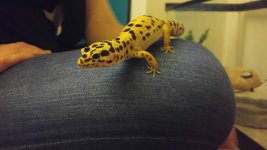Cricket advice is welcome.

Please clarify your comment that I've made blue.
Your link did not post.
The introduction explains it.
Most of the attention on insects as a food source focuses on protein
content. However, lipids are also a main component of insects and are
produced during protein isolation (Yi et al., 2013).
Lipids are a source
of energy and of essential fatty acids (FA), therefore they could be
used to combat malnutrition in developing countries (Smit, Muskiet, &
Boersma, 2004). In populations with inadequate total energy intake,
such as seen in many developing regions,
dietary fats are important
macronutrients that contribute to increase energy intake to more
appropriate levels (FAO, 2010). Insect lipids can contribute to human nutrition
by supplying energy and essential fatty acids (Ramos-Elorduy,
2008). Generally, the lipid content of insects ranges from less than 10%
to more than 30% on a fresh weight basis and are relatively high in
the unsaturated C18 FA, including oleic acid (18:1 cis9), linoleic acid
(18:2 cis9,12) and linolenic acid (18:3cis9,12,15) (DeFoliart, 1991).
Remember how it was mentioned that dubia roaches where lacking some fatty acids? Basically one insect can offer what another cannot regardless of what it is fed, hence why as you know variety is important.
Highlight the whole link, hit copy and just paste it in the browser, then enter. It should work.
Biochemistry of Lipids: Fatty Acids, Omega Fats, Triglycerides, Phospholipids, Eicosanoids
Enjoy;-)



